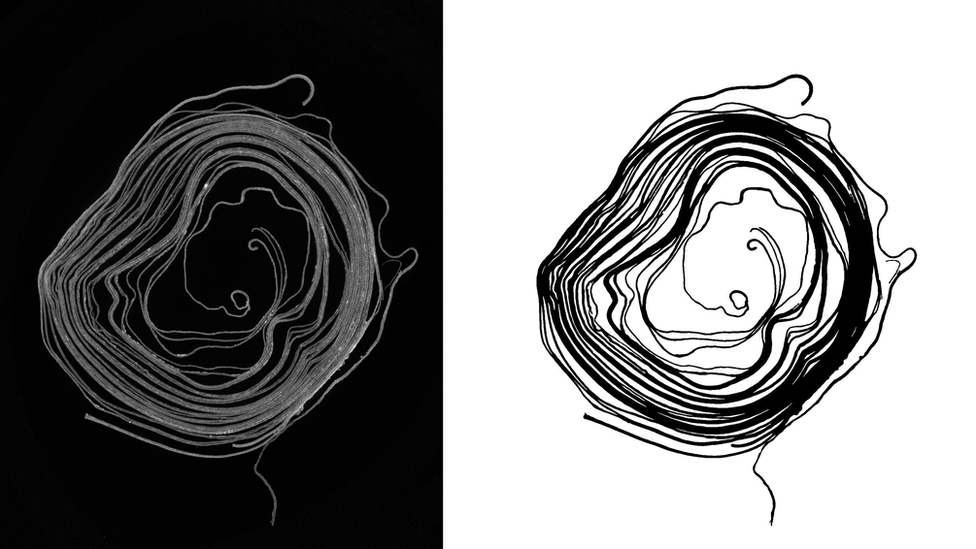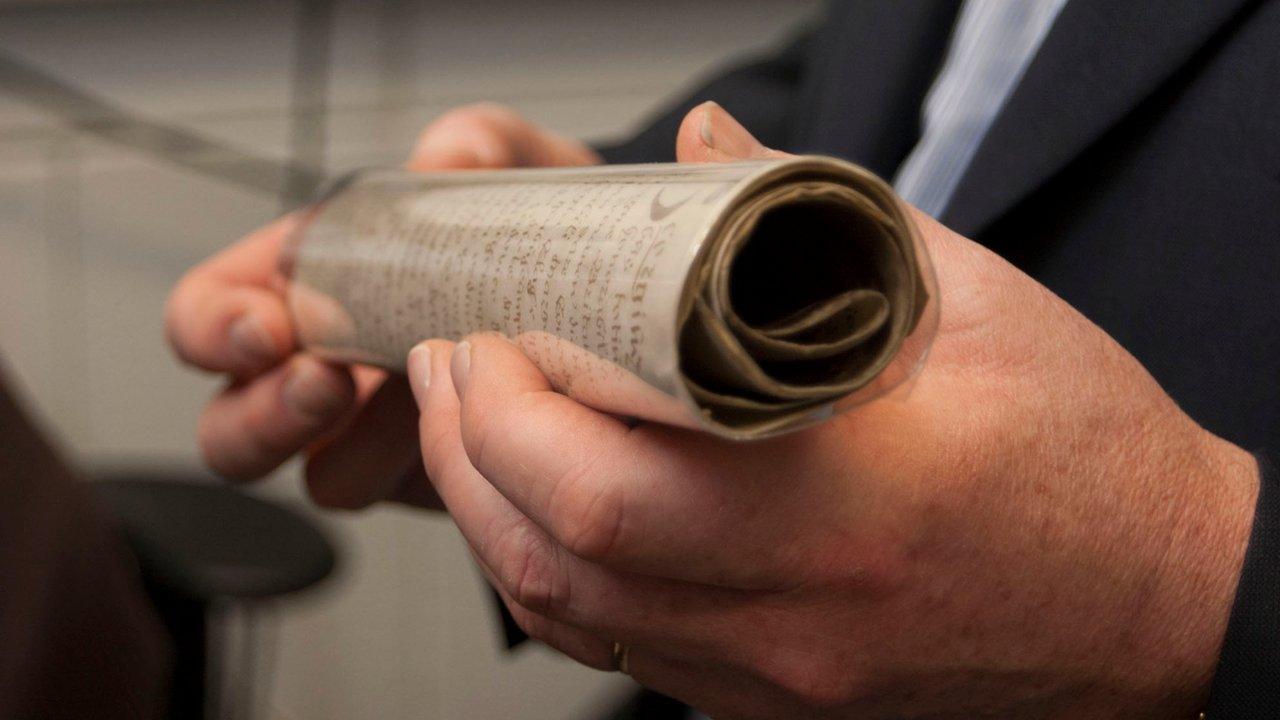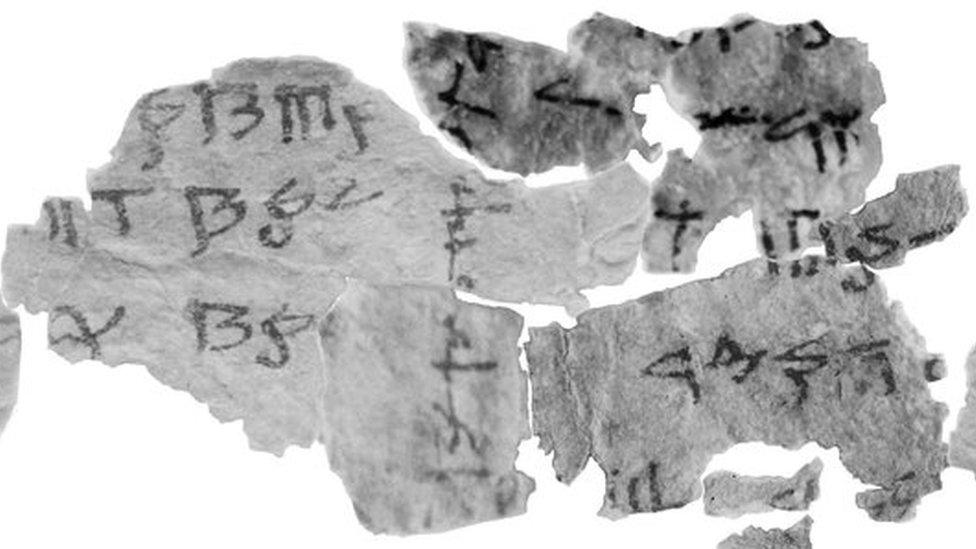Cardiff University's new X-ray method reveals ancient scroll
- Published

The scroll was severely burnt and researchers were unable to open it
Scientists have developed brand new techniques to reveal the hidden text inside damaged and unreadable scrolls.
Researchers at Cardiff University have been refining their technique since they first revealed the hidden text of a scroll more than five years ago.
The new technique has shown how "virtual unravelling" can be achieved with scrolls that containing multiple pages.
It has now revealed text inside a severely burnt 16th Century scroll.
The scroll, from Diss Heywood Manor in Norwich, contained information on life in the manor and included details on land transactions, disturbances of the peace, payment of fines, names of jurors and information on the upkeep of land.

The technique uses X-ray tomography
But, it had been severely charred, damaged and fused together, with no possible way of physically opening it without destroying it.
The new technique meant researchers were able to link the scroll to Heywood Hall, and identify it as a record of the Curia Generalis, the General Court.
It involves using X-ray tomography, usually reserved for use in the medical field, to create thousands of thin cross sections of the scroll. In each cross-section, ink from the scroll is made visible as bright blobs.
Using computer algorithms, the team can then piece together each of the cross sections and their associated ink marks to form a flat representation of the scroll.
Professor Paul Rosin, from Cardiff University's School of Computer Science and Informatics, said the work was "extremely challenging".

You may also like:

"[This was] because it contained four sheets of parchment and many touching layers, which can result in text being assigned to the wrong sheets," he said.
"In addition to this, the scroll was heavily discoloured and creased and was covered in soot-like deposits over the entire exterior. Nevertheless, we've shown that even with the most challenging of samples, we can successfully draw information from it.
"We know that there is a large body of historical documents in museums and archives that are too fragile to be opened or unrolled, so we would certainly welcome the opportunity to try out our new techniques.
"Similarly, the method we've developed is heavily automated, opening up the possibility of exploring a larger range of documents and even other types of media, such as old and damaged camera films."
- Published16 May 2013

- Published22 January 2018

- Published8 September 2018
